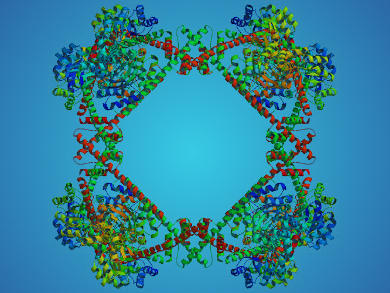Designing proteins that self-assemble into a desired shape is a challenge, especially for relatively large structures.
Todd O. Yeates, University of California, Los Angeles (UCLA), USA, and colleagues have created a porous self-assembling protein cage. It is comprised of 24 subunits, has a diameter of 225 Å with large openings into the inner cavity and a molecular weight of 750 kDa. They combined two natural protein oligomers using an α-helix linker and characterized the resulting structure by X-ray crystallography. Mass spectrometry and electron microscopy revealed that other assembled forms exist in solution.
While this particular cage might be too porous to carry a cargo, the researchers think the same design principles could lead to more closed structures that are suitable as containers.
- Structure of a designed protein cage that self-assembles into a highly porous cube,
Yen-Ting Lai, Eamonn Reading, Greg L. Hura, Kuang-Lei Tsai, Arthur Laganowsky, Francisco J. Asturias, John A. Tainer, Carol V. Robinson, Todd O. Yeates,
Nat. Chem. 2014.
DOI: 10.1038/nchem.2107



